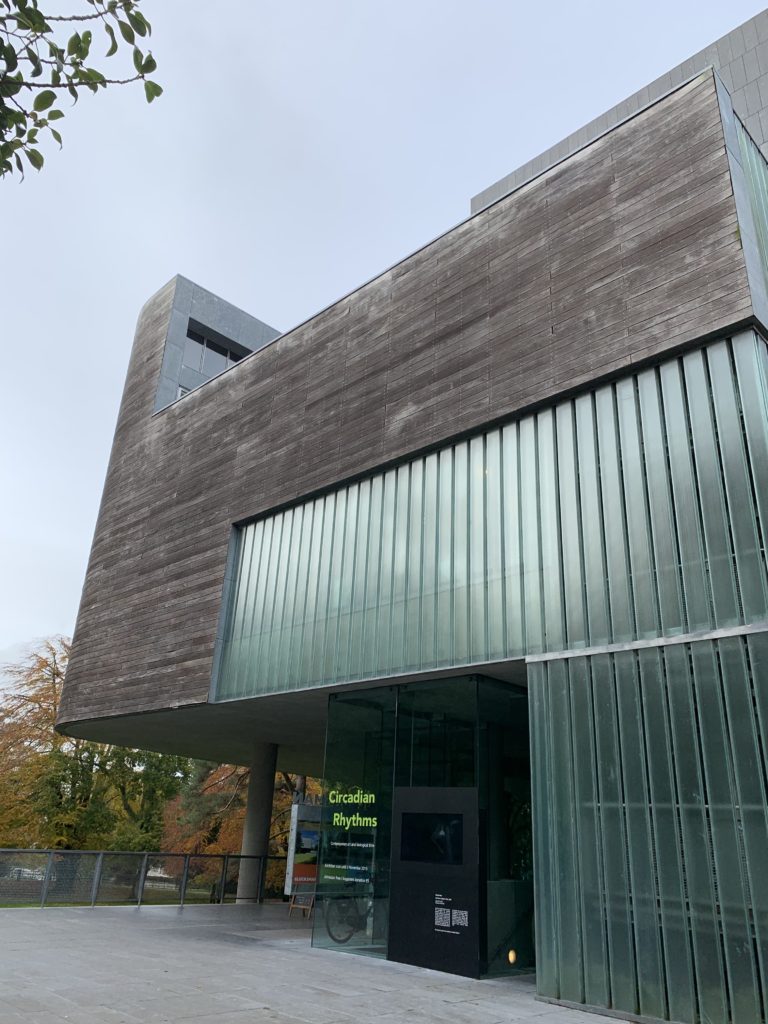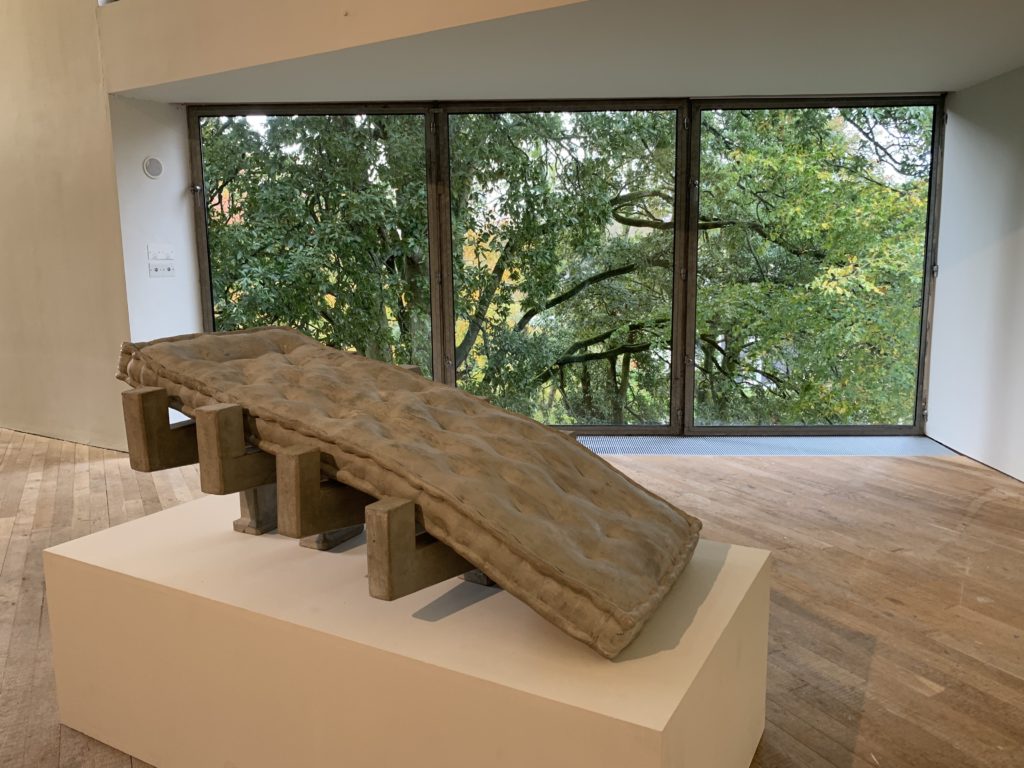
In contrast to the neo-gothic architecture found in UCC’s picturesque main quadrangle, the Glucksman stands on the lower campus grounds as a sleek, modern building composed of simple geometric shapes and glass floor-to-ceiling windows. Walking through the elegant gallery—which I would later learn was recently named one of the “1001 Buildings You Must See Before You Die”—I find a concrete sculpture of a highway ramp with a mattress in place of the roadway. Wandering further, I come across an intricate installation made up of melting wax candles, evaporating water, and growing plants. I stare blankly at what looks to be a series of drawings of weeds, possibly at different stages of growth. Later, upstairs, I visit a dark room with a projector playing sped-up footage of commuters making their way to and from work in a dense city.

The central theme of the exhibit is circadian rhythms—an exploration of the beat that life makes through its regular cycles and patterns, tied both to the turning of the Earth and the molecular symphonies in our cells. The pieces on display at the Glucksman force us to meditate on our “biological clock,” and how it sometimes comes into conflict with the unyielding pace of our lives. I need only reflect on circadian rhythms for a short time before being reminded of when my own was knocked off-tempo by the inevitable jet lag that comes with a transatlantic move across several time zones—my first few days in Cork started, consistently and despite my best efforts, at noon. While my body was adjusting to a new day/night cycle, recalibrating its release of cortisol and melatonin to match its new Irish environment, I found myself adjusting to other, larger rhythms of life as well.
Culture shock, too, is something like a social jet lag—an adjustment to the rhythm of life around you rather than within you. As my hypothalamus re-tuned to the timing of the rising and setting sun, I keyed into the social cues and norms of my new Irish home. Walking through UCC’s campus and Cork at large, I was inundated with swaths of young men all donning the same Peaky Blinders haircuts and tight joggers. On crossing the street, I continuously failed to look right, and quickly learned that busses do not stop at your bus stop unless beckoned to. I was surprised to find the city more buzzing on a Tuesday night than a Friday night, when most of the college students would have gone home for the weekend. And importantly, I learned that someone claiming, “It was great craic,” when recounting their night out to me does not imply the same thing it does in the US. Gradually, after some biological and social recalibration, I began to wake up at more reasonable hours and feel more in touch with the culture of the city.
Over the past half-decade at Northeastern University in Boston, I’d grown accustomed to a particular cadence of life similar to most American undergrads—frenetic—and my weeks, months, and years fell into a predictable routine, a fast beat. But after a single flight from JFK to DUB, I found myself landing in a new year, a year with a tempo more like a resting pulse rather than a mid-sprint. Suddenly, I was able to afford time for weekend trips to Killarney or Dublin, learn new sports like kickboxing and tennis, and cross off items on an ever-growing but always-neglected reading list. As I look ahead to my Mitchell year, I’m grateful and excited to have the opportunity for personal growth, reflection, and cultural immersion that comes with a slower pace of life. The rhythm is different but I’m liking the beat.
